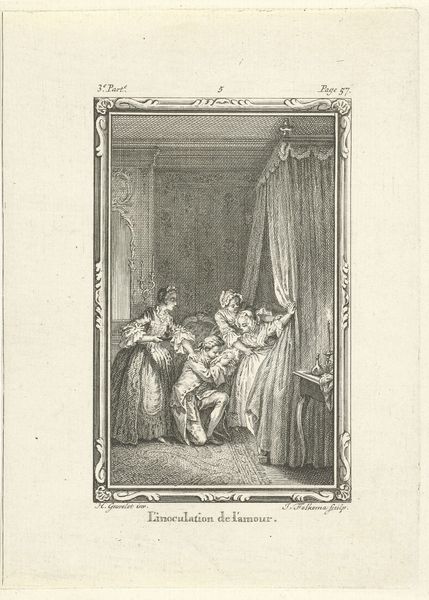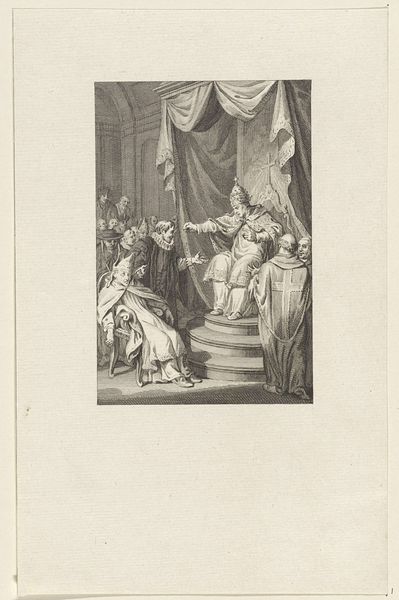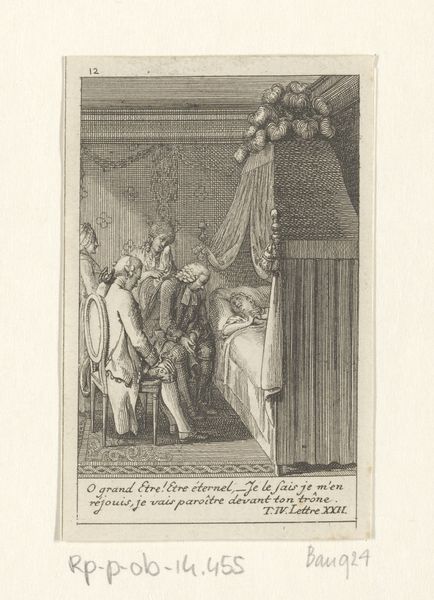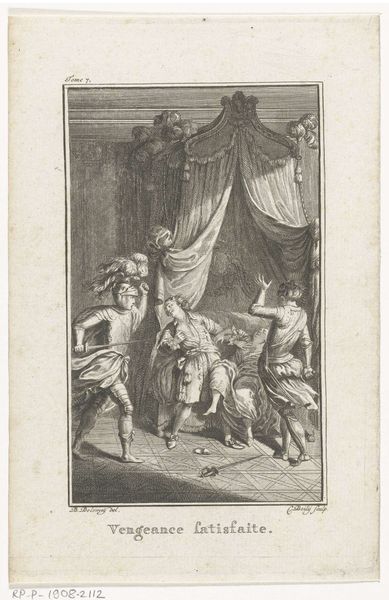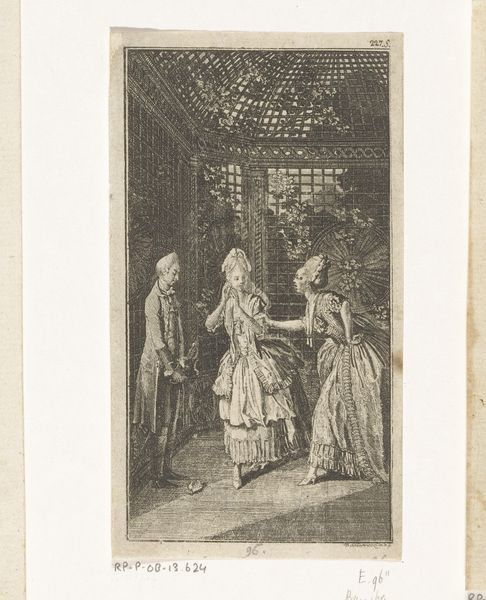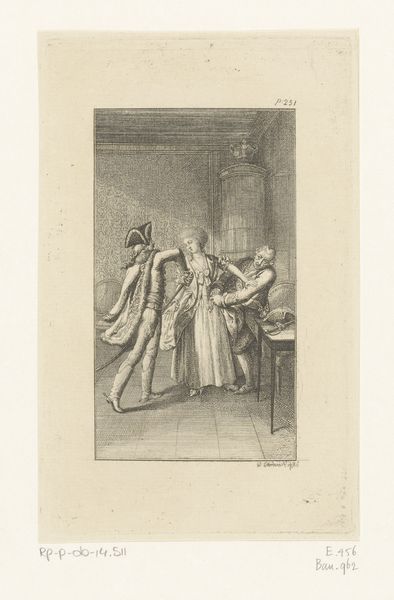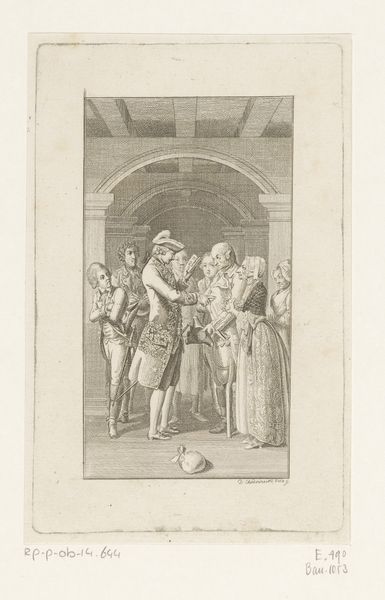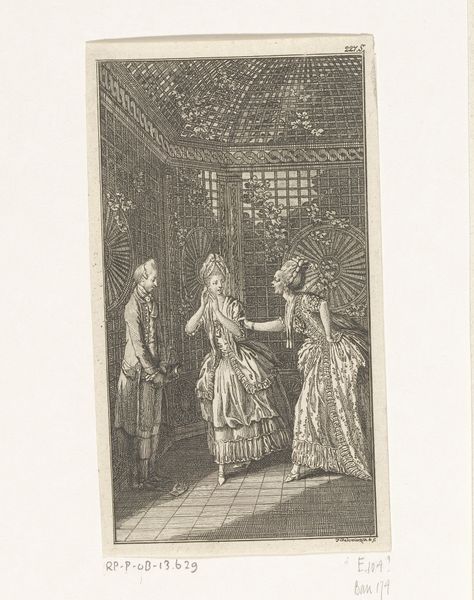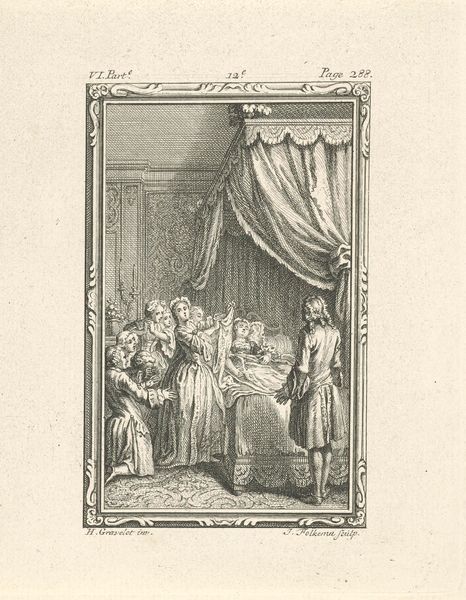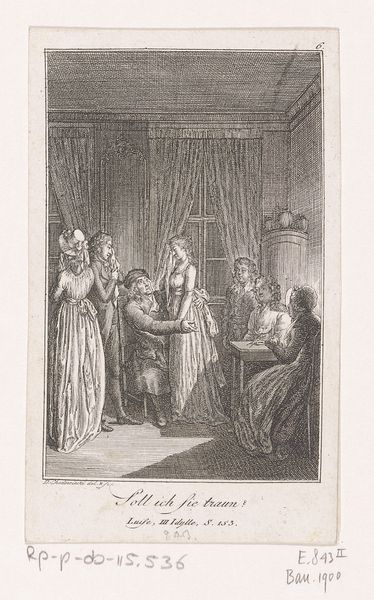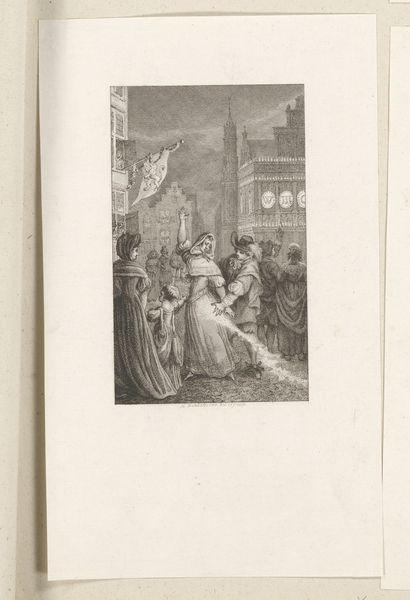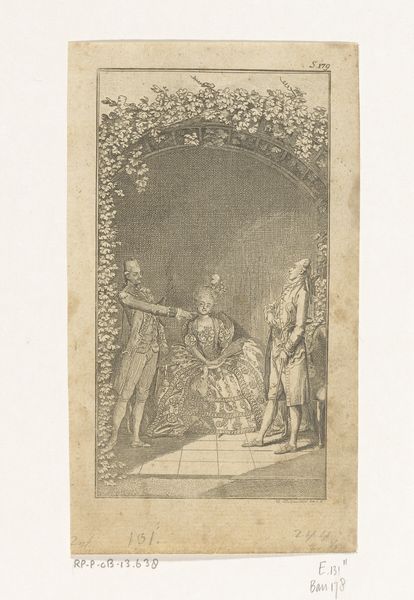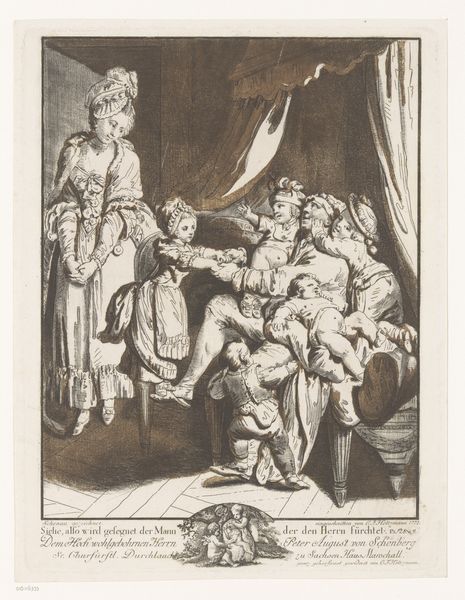
Dimensions: height 162 mm, width 104 mm
Copyright: Rijks Museum: Open Domain
Curator: We're standing before Daniel Nikolaus Chodowiecki's etching and engraving from 1784, titled "Lovelace Does as if He Is Ill," found here in the Rijksmuseum. Editor: The scene strikes me as a bit farcical. There's an overdramatic, almost staged quality to the feigned illness and the attending figures seem equally theatrical. Curator: Indeed. Chodowiecki was known for his narrative scenes that captured social customs and moral lessons of the time. The print likely illustrates a scene from Samuel Richardson's novel "Clarissa," wherein Lovelace, the manipulative protagonist, feigns illness. The elaborate bed hangings, the attire, the arrangement of figures– all speak to class and power. Editor: Ah, placing it within the context of "Clarissa" reframes it. Now it's a commentary on manipulative masculinity and performative vulnerability as a power tactic. We often see male authority asserted through displays of physical strength, but Lovelace's alleged illness in this print creates an inversion. His ‘weakness’ ironically commands the attention of all present and centers him within this feminine sphere. Curator: Exactly. And note the reactions of the women attending to him. Some look concerned, others appear skeptical or even gossipy. The work shows us not only Lovelace’s deceit, but also the complicated social dynamics within a wealthy household of that era. Think about the way it reflects ideas of health, domestic roles, and even gendered performance, specifically how illness could be deployed to manipulate those dynamics. Editor: It definitely pushes against sentimental tropes, revealing how even intimate gestures, such as those around a sickbed, could be corrupted and exploited as tools to deceive and subjugate. Viewing it today, I think it's vital that we see how some behaviors, particularly among powerful men, haven't fundamentally changed much in 200 years. It offers insight into recognizing familiar behaviors and patterns in present-day life. Curator: Well said. It makes one consider the persistent power dynamics that are still being negotiated in society. I think Chodowiecki was keen to subtly draw attention to such themes of performativity. Editor: For me, viewing this has made me think a lot about how certain tropes can be repurposed across historical periods as the tactics of powerful individuals. Thank you.
Comments
No comments
Be the first to comment and join the conversation on the ultimate creative platform.
